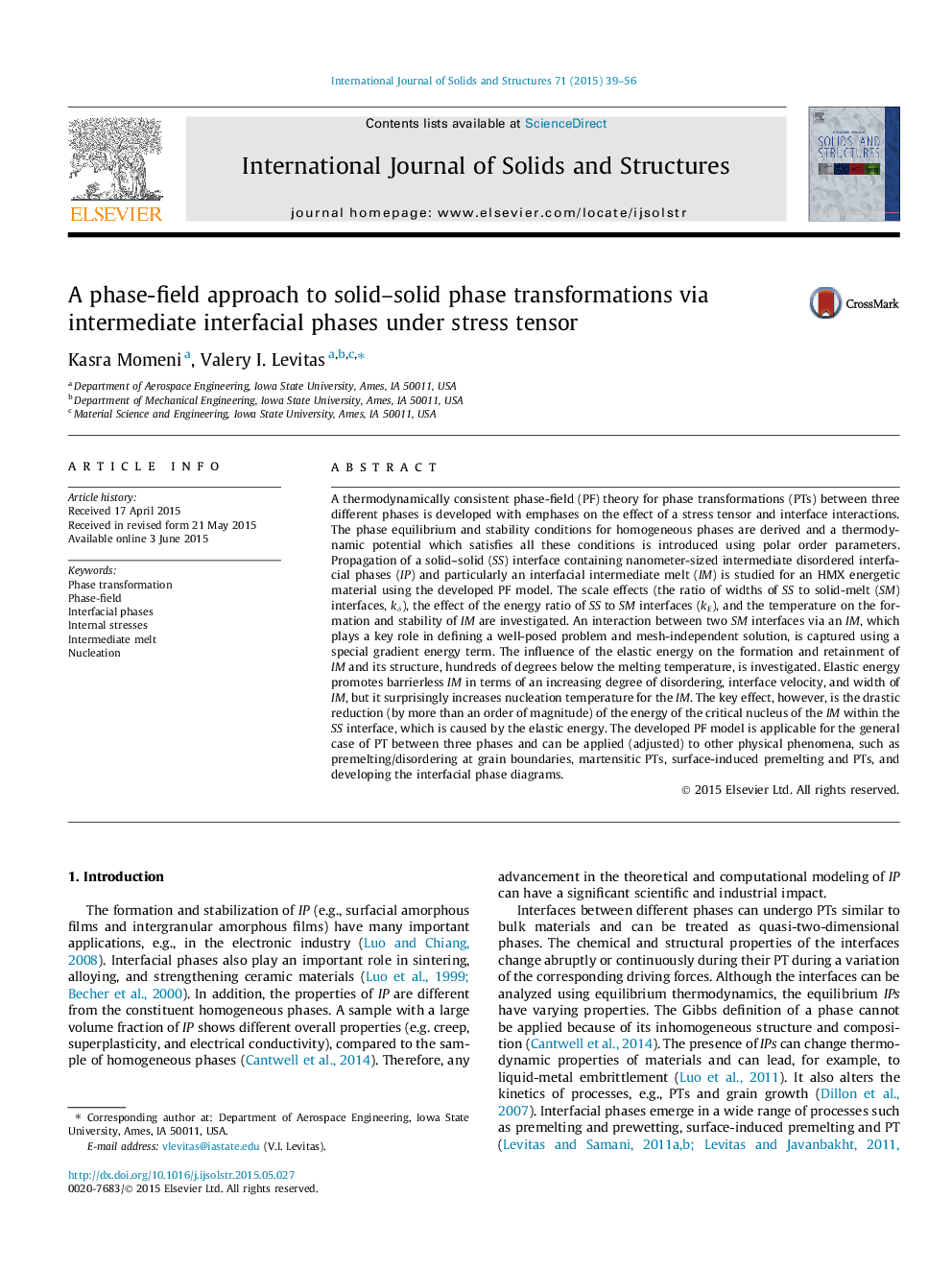| کد مقاله | کد نشریه | سال انتشار | مقاله انگلیسی | نسخه تمام متن |
|---|---|---|---|---|
| 277311 | 1430216 | 2015 | 18 صفحه PDF | دانلود رایگان |
A thermodynamically consistent phase-field (PF) theory for phase transformations (PTs) between three different phases is developed with emphases on the effect of a stress tensor and interface interactions. The phase equilibrium and stability conditions for homogeneous phases are derived and a thermodynamic potential which satisfies all these conditions is introduced using polar order parameters. Propagation of a solid–solid (SS) interface containing nanometer-sized intermediate disordered interfacial phases (IP) and particularly an interfacial intermediate melt (IM) is studied for an HMX energetic material using the developed PF model. The scale effects (the ratio of widths of SS to solid-melt (SM ) interfaces, kδkδ), the effect of the energy ratio of SS to SM interfaces (kEkE), and the temperature on the formation and stability of IM are investigated. An interaction between two SM interfaces via an IM, which plays a key role in defining a well-posed problem and mesh-independent solution, is captured using a special gradient energy term. The influence of the elastic energy on the formation and retainment of IM and its structure, hundreds of degrees below the melting temperature, is investigated. Elastic energy promotes barrierless IM in terms of an increasing degree of disordering, interface velocity, and width of IM, but it surprisingly increases nucleation temperature for the IM. The key effect, however, is the drastic reduction (by more than an order of magnitude) of the energy of the critical nucleus of the IM within the SS interface, which is caused by the elastic energy. The developed PF model is applicable for the general case of PT between three phases and can be applied (adjusted) to other physical phenomena, such as premelting/disordering at grain boundaries, martensitic PTs, surface-induced premelting and PTs, and developing the interfacial phase diagrams.
Journal: International Journal of Solids and Structures - Volume 71, 1 October 2015, Pages 39–56
